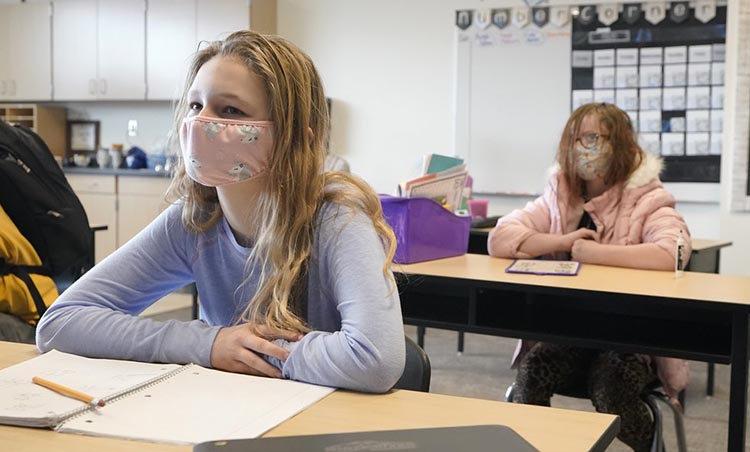
From K-12 Dive
By Shawna De La Rosa
July 6, 2021
Dive Brief:
With fewer than half of children ages 12-17 having been vaccinated against COVID-19 and not much growth in that number expected before school starts, some districts have already decided to keep masks and other preventive measures in place this fall to reduce in-school transmission rates, District Administration reports.
A Kaiser Family Foundation report shows 25% of parents don’t plan to get their children vaccinated, and 18% are taking a wait-and-see approach based on safety and efficacy concerns. Of those willing to have their child vaccinated, 67% are Democrats and 37% are Republicans, while Independents are divided.
Similarly, 58% of Democrats believe schools should required COVID-19 vaccines, compared to 20% of Republicans. Contributing to the concern is the fact that the shots are still only allowed under “emergency use” guidelines by the Food and Drug Administration.
Dive Insight:
A survey from the COVID Collaborative, Ad Council and Council of the Great City Schools released in May tells a slightly different story. It found 61% of parents would allow their child to receive a COVID-19 vaccine, 27% would not, and 12% were still undecided. Additionally, 59% of respondents supported requiring students to get vaccinated, and 73% would be more likely to vaccinate their child if it was required.
Though many education stakeholders believe vaccinating children against COVID-19 will keep transmission rates lower, there seems to be little interest in requiring it. However, some states — such as Oklahoma — have passed legislation against requiring the vaccine for K-12 schools. Oklahoma also outlawed mask mandates in schools.
Similar vaccine bills are under consideration in Michigan and Pennsylvania, and the National Education Association and the American Federation of Teachers aren’t pushing for vaccine requirements.
Though vaccinated students ages 12 and older will eliminate some of the transmission risk, those under 12 are still ineligible to receive a vaccine and, therefore, still at risk. The question now is whether masks and other preventative measures will be required when schools open in the fall.
In Washington state, the answer is “yes.” In an effort to give districts an early start to prepare for in-person learning this year, the Washington State Department of Health has already issued guidelines for the fall that require everyone in schools to wear masks. Good ventilation, 3-foot social distancing, and cleaning and infection control protocols will also still be required, and schools must have response plans in place.
In Massachusetts, physical distancing won’t be required, but state officials are still mulling whether to require masks. Conversely, Maryland Gov. Larry Hogan is currently against requirements for masking and social distancing in schools due to low virus positivity rates in the state.
Photo: KWCH
Read this and other stories at K-12 Dive

